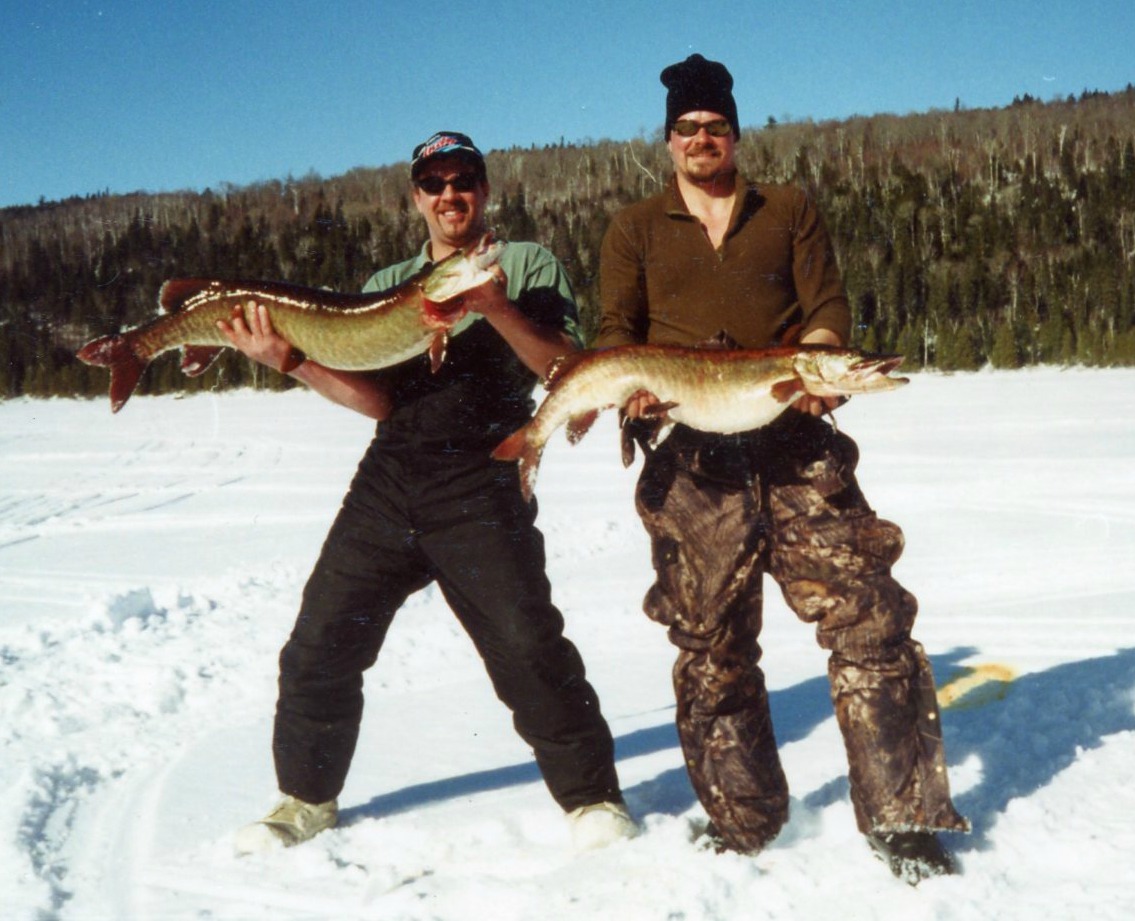
Ice fishermen tend to have a different outlook on their sport than warm weather anglers. It’s a much shorter season, the weather is often inhibiting, as are travel conditions, and as far as angling options go, it’s the only game in town.
From spring to fall there are many more waterways open. You can pick your rod, style of casting, variety of fly, lure or live bait and whether to wade, float or troll. Hard water angling is not as enjoyable, and a lot of us ice fish just to get out of the house and shake off the winter doldrums.
Some folks confine their winter outings to a warm, comfortable ice shanty, where jigging for smelt is the main attraction, but other varieties of larger game fish are hooked randomly. Most sportsmen auger holes and set out tip-ups for brook trout, landlocked salmon and togue, usually on favorite neighborhood waterways within 15 to 30 minutes from home. A few devout ice drillers are seeking a greater challenge, whether a bragging size fish, a unique species or a combination of both.
These fanatics don’t mind driving two or three hours each way or spending overnight at camp to attempt to accomplish their goal. If this endeavor piques your interest, I have a few ideas of lakes and fish varieties that may interest you. After all, while most summer fishing requires a bit of skill and finesse, there’s a fair amount of luck involved with ice fishing.
My favorite fairly rare and extremely challenging quarry is the brown trout. Only a handful of Aroostook lakes and streams offer a population of this wily, tough-fighting fish. To make success even tougher, browns are notoriously nocturnal feeders so daytime action on traps can be slow. Local lakes that harbor browns also boast healthy populations of brook trout, some salmon, pickerel and one or two species of perch, so odds of a brown grabbing a live bait are tempered by the competition.
Fat golden shiners, silver shiners and small smelt are prime baits and use at least a size 8 hook and a short 10-pound test shock leader. Browns are strong, deep diving, head shaking fighters that will break weak equipment. Meduxnekeag Lake (locally called Drew’s) and Nickerson Lake, both near Houlton, are prime local brown trout waters. Both spots are easy to reach and while a snowmobile offers access to more area, successful outings may be enjoyed just off shore near a plowed parking area.
Pretty much every Crown of Maine angler is aware of the unexpected introduction and subsequent population explosion of muskellunge in several Northern Aroostook waterways. Glazier Lake in particular draws a good deal of winter attention and the state record has been set and broken half a dozen times during the last few winters. Summer regulars to Glazier, which is actually a wide spot in the St. Francis River as well as a boundary water shared with New Brunswick, swear that they have spotted musky that will surpass the 30-pound mark.
Putting record size fish aside, even a toothy 10-pound musky is a unique and exciting accomplishment and well worth a day trip up north. For anglers carrying their own live bait and snowmobiles, its best to avoid customs hassles at the Fort Kent/Clair border crossing and stay in the U.S. using the Allagash approach roads. Large baits, 6-8 inch smelt or better yet, 10-inch suckers are a plus, and 6-10 inch wire leaders a must. Be sure lines are strong and long, and tip-ups and reels well maintained.
Another species that’s popular to adventuresome ice drillers is the whitefish. Extremely tasty table fare and challenging to hook and land, this is another species confined to just a few lakes. Whitefish have a very delicate mouth and take jigs and baited hooks quite gently, so care must be taken when setting the hook and playing the fish. Circle hooks seem to work better than regular bait hooks and size 6 or 8 stay imbedded well.
Only about 45 Maine waters have notable populations of whitefish. Among likely spots to visit this winter are Chamberlain Lake, East Grand and any of the quartet of Musquacooks. One of the most interactive methods of hooking whitefish is with a lightweight jigging rod and since the average size runs one to three pounds, the tussle is a handful. Whitefish tend to travel and feed in small schools so if you catch one, get the bait right back down as it’s common to pull up two or three in a short time.
Last, but certainly not least, an often overlooked quarry is the cusk. While this relative of the cod is a bit ugly, looking like a cross between a bullhead and eel, its firm white meat makes delicious chowder. More cusk are caught by mistake than by intent, as anglers leave a bait too close to bottom and these piscine vacuum cleaners suck it up.
Some cusk can easily top five pounds and they put up a gritty tug of war. Fishermen who really want a fish for food intentionally put a dead bait fish or a smelt head on one of their lines and lower it right on bottom. Then just sit and watch all your tip-ups, sooner or later, the cusk trap will certainly take off. If you’re not interested in eating the cusk, enjoy the tussle, cut the line and let the fish fight again.
There are lots of ice fishing options out there, but once in awhile it’s nice to enjoy a new location, a new species and a new challenge. We endure a long tedious winter, so change is good.






